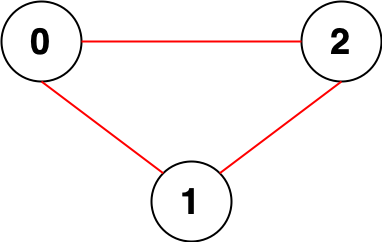You are given an integer n. There is an undirected graph with n nodes, numbered from 0 to n - 1. You are given a 2D integer array edges where edges[i] = [ai, bi] denotes that there exists an undirected edge connecting nodes ai and bi.
Return the number of pairs of different nodes that are unreachable from each other.
Example

Input: n = 3, edges = [[0,1],[0,2],[1,2]]
Output: 0
Explanation: There are no pairs of nodes that are unreachable from each other. Therefore, we return 0.
Solution
This one was extremely tough, I found a solution here
var countPairs = function (n, edges) {
// create an adjacency list
const adj = [];
for (let i = 0; i < n; i++) {
// create an array for each node
adj.push([]);
}
for (let [from, to] of edges) {
// add the edges to the adjacency list
adj[from].push(to);
adj[to].push(from);
}
// create a set to keep track of visited nodes
const visited = new Set();
function dfs(from) {
visited.add(from);
let count = 1;
for (const to of adj[from]) {
// if the node has not been visited, add it to the count
if (!visited.has(to)) {
count += dfs(to);
}
}
return count;
}
const groups = [];
for (let i = 0; i < n; i++) {
if (!visited.has(i)) {
const count = dfs(i);
groups.push(count);
}
}
let ans = 0;
for (let i = 0; i < groups.length - 1; i++) {
for (let j = i + 1; j < groups.length; j++) {
ans += groups[i] * groups[j];
}
}
return ans;
};